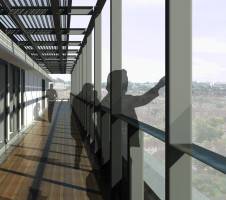September 24, 2013
If you are moving to new offices, make sure you can get rid of the old ones first
One of the most common reasons for large organisations to move to new offices is a consolidation of an extensive and disparate estate that has developed over a long period of time. But what happens when the benefits of the move are scuppered because the organisation finds it impossible to get rid of its old buildings? That is the question facing Newham Borough Council as it emerges that it may have to quit the controversially swanky £110 million offices it moved to in 2010 and back into some of the 26 properties it left at the time and has struggled to unburden itself of since.






























September 20, 2013
The rehabilitation of the cubicle and other lessons from 100% Design
by Mark Eltringham • Comment, Events, Flexible working, Furniture, Products, Workplace design
UniteSE from KI
As we’ve said before, acoustics has become the dominant theme at office design exhibitions over the past three or four years. That’s been true at shows in Milan, Cologne, Chicago and London and was certainly the case at this year’s 100% Design at Earl’s Court. A quick whizz around the office zone at this year’s event – which is a useful way of getting an impression before you stop to talk to people about the detail of what they’re doing – revealed that well over half of the exhibitors were showcasing products that addressed the issue of acoustics. And yet things have also moved on from recent events, not least in the rehabilitation of that most demonised of all office furniture pieces – the cubicle.
More →